Photography courtesy of Lowell Washburn, all rights reserved.
Bagging the perfect Christmas goose is a time honored, decade’s long family tradition. In this instance, the word “perfect” means a bird that is large, white skinned, hog fat and, just as importantly, is totally shot free.
Delivering such a bird to the Holiday table is not without challenge. Relentlessly hunted from subarctic breeding grounds all the way to southern wintering areas, decoy-shy late season honkers do not make easy prey. By the time we get to this late in the game, they have literally seen and heard it all. Masters of survival, these birds are top-of-their-class, PhD graduates. Mid-winter Canadas can detect your decoys are fake from a mile away and know your calling is phony by the time you blow the second note.
But the playing field can be leveled. When it comes to end of the season waterfowl hunting, winter weather becomes the great equalizer. Let the thermometer drop into the single digits and cover local cornfields with a fresh blanket of snow and you’ll see those — “We’re smarter than you are” — geese become surprisingly cooperative. Funny how falling temperatures and stiff northerly breeze can suddenly make your decoys look like the real deal to passing flocks. And although December field conditions may, at best, seem marginal for human survival; any cold weather suffering is easily worth the discomfort as success skyrockets.
That below zero cold snap that moved across northern Iowa a few days ago provided a classic example. Although local open water areas were already hosting impressive populations of Canada geese, those numbers were bolstered even further by the mass arrival of geese fleeing heavy snowfalls in northern Minnesota and elsewhere. Along with the dramatic influx of new birds came an equally dramatic increase in opportunities.
With north winds gusting to more than twenty miles per hour and temperatures hovering in the lower single digits, the conditions were downright polar. Geese sat tight and didn’t start leaving their open water sanctuaries until mid-afternoon. It was a late start but, for area hunters, the wait soon proved worth the effort. In undulating formations and ragged lines, flock after flock of Canada geese began moving across the frozen landscape. Before long, the first groups began landing in corn stubble. Where the first birds went, the rest soon followed. Unfortunately for me, the geese were all landing about two miles distant. For the time being at least, I was out of the picture and would just have to lie in the decoys and enjoy the show as hundreds more glided to the buffet line. A bald eagle passed overhead and soon disappeared in the direction of the feeding geese. A short time later, the honker horde rose in unison; a sure signal that the previously mentioned eagle had reached the field. Bald eagles have learned to follow major goose migrations, and many of the huge raptors spend the entire winter chasing waterfowl. A fat goose provides an eagle with a greater number of high octane calories than traditional fish diets.
For a time, the geese just milled in circles like some giant swarm of insects. Most of them sat back down again, but two large groups decided to move to other fields. Meanwhile, the unending lines of geese coming off the airholes continued to increase. With geese soon feeding at all points of the compass; the prospects of bagging a bird was looking up.
A few minutes later, a flock containing 50 or more geese gave the decoys a serious look but decided to let the wind push them on by. Three more flocks arrived at once, and one of the groups decided to drop in for lunch. The geese were honking like crazy and I excitedly clucked back on the Eastern Shoreman. Continuing their descent, the honkers made the first pass at thirty yards; and I could see their heads tilting back and forth as they looked things over. The second pass brought them straight to the decoys. It was a magnificent scene: Clean snowy backdrop; a dozen or more huge and noisy Canada geese — looming larger and louder by the second, all coming head on with wings set and black-webbed landing gear already extended for a touchdown.
Persuading a flock of highly educated, mid-winter Canada geese to actually land in a set of decoys represents one of waterfowling’s supreme challenges. With the lead goose now back peddling for a landing at a distance of around five paces, bagging the perfect Christmas goose was no longer an issue. This year’s bird weighs in at ten pounds, is white skinned, hog fat, and totally shot free.
Final Thought: Preparing the perfect Christmas goose can be almost as much fun as actually bagging the bird. For our family, Chesapeake Barbecued Canada Goose is the only way to go. The barbecue sauce is a variation of an old time recipe originated by the Marlin Firearms Company. My introduction to the elixir occurred 30 years ago when Guy & Joan Zenner prepared the recipe with halved and roasted ring-necked ducks. It was love at first bite and I’ve never found a recipe that does waterfowl more justice – or have ever had a recipe more requested by guests. The complete start to finish process is detailed below. Have a joyous, blessed Christmas season.
CHESAPEAKE BAY BARBECUED CANADA GOOSE
Ingredients:
1 whole, plucked Canada goose
½ pound butter
½ cup catsup
1 tablespoon sugar
1 ½ tablespoons Worcestershire sauce
1 ½ tablespoons lemon juice
1 medium onion, chopped
2 or 3 cloves of garlic, pressed [may sub 1/8th tsp. garlic powder]
¼ tsp. Tabasco [optional, but highly recommended]
½ tsp. salt [also optional]
Ground black pepper to taste
Directions:
Bank two medium large beds of charcoal on opposite sides of a covered [Weber] grill. Prepare goose by lightly brushing skin with oil and adding your favorite seasoning [Durkee’s six-pepper blend is a good choice]. When coals are fully hot place Canada goose, breast up, in center of grill and cover. [To add color and create a more robust flavor try adding a few chunks of hickory to the coals.] Cooking time for a large Canada goose is approximately 1 ½ hours. Cooking times will vary according to ambient temperature, humidity, wind, and size of goose. After an hour and twenty minutes, begin testing goose with a small [smaller the better] probe. When juice runs pink, immediately remove from grill. Once the juice turns clear, the goose is done. Any further cooking will put your meal on the fast track to disaster. Allow moisture to leave the meat and your goose is ruined! DO NOT OVERCOOK! ! !
————————–
For sauce: As [goose] cooking nears completion, combine the rest of the ingredients and slowly simmer in a sauce pan for 8 to 10 minutes. Do not heat to boil. Note: Including the suggested small amount of Tabasco will not make the Chesapeake sauce spicy; you won’t even taste it. What it does accomplish, however, is to pull all of the other flavors together. If you want the sauce to taste “hot” you will need to add at least four times the suggested amount of Tabasco.
————————–
Final Step: Carve goose into thin slices and place in covered dish. Smother goose with simmering Chesapeake sauce and serve immediately. Recommended sides for your Chesapeake Bay “Down East” home cooked feast include baked wild rice & mushrooms, oyster dressing, crab cakes, stuffed clams and red currant jelly.
Although this recipe sounds too simple to be true, that’s all that there is to it — roast the goose; make the sauce. Best of all, this marriage of flavors is simply out of this world. Recipe also works great with ducks of any species.
One final tip — DO NOT OVERCOOK! !

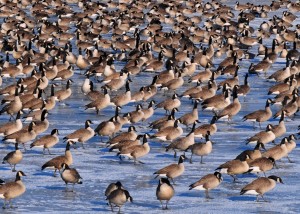
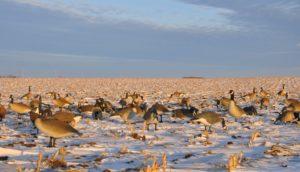
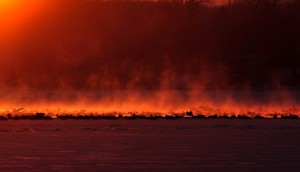

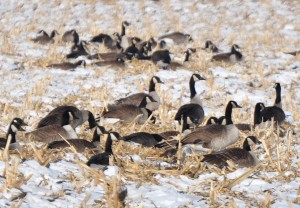

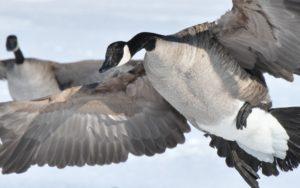
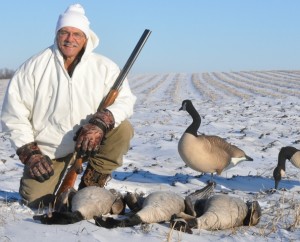
 Tom Cope
Tom Cope Sue Wilkinson
Sue Wilkinson Susan Judkins Josten
Susan Judkins Josten Rudi Roeslein
Rudi Roeslein Elyssa McFarland
Elyssa McFarland Mark Langgin
Mark Langgin Adam Janke
Adam Janke Joe Henry
Joe Henry Kristin Ashenbrenner
Kristin Ashenbrenner Joe Wilkinson
Joe Wilkinson Dr. Tammy Mildenstein
Dr. Tammy Mildenstein Sean McMahon
Sean McMahon